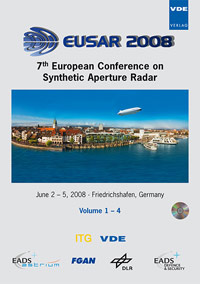RADARSAT-2 Mission Status: Capabilities Demonstrated and Image Quality Achieved
Konferenz: EUSAR 2008 - 7th European Conference on Synthetic Aperture Radar
02.06.2008 - 05.06.2008 in Friedrichshafen, Germany
Tagungsband: EUSAR 2008
Seiten: 4Sprache: EnglischTyp: PDF
Persönliche VDE-Mitglieder erhalten auf diesen Artikel 10% Rabatt
Autoren:
Thompson, Alan A.; Luscombe, Anthony; James, Kenny; Fox, Peter (MacDonald Dettwiler, Canada)
Inhalt:
The RADARSAT-2 satellite was successfully launched on December 14, 2007. Following the launch, the commissioning period lasted approximately three months. At the time of writing (March 2008), commissioning is nearing completion. This paper reports on the demonstrated RADARSAT-2 capabilities at this time. The imaging capabilities of RADARSAT-2 include all the heritage beams and modes of RADARSAT-1, and a variety of new beams and modes. These new modes include better resolution modes than RADARSAT-1, and various multi-polarization (dual and quad-polarization) modes in contrast to the single HH-polarization capability of RADARSAT-1. In addition RADARSAT-2 has an experimental GMTI mode known as the Moving Object Detection Experiment (MODEX). We show example imagery for many of these imaging modes, illustrating various RADARSAT-2 applications. The achieved image quality is also reported.


